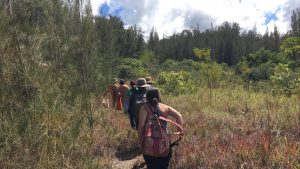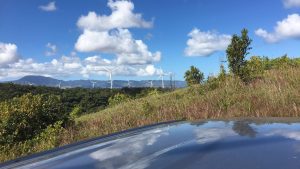What we see is more than what meets the eye here in Hawai’i. From its beautiful trees and plants to its amazing ocean waters, we are captivated. Our breath taken away from us after each adventure that rewards us with views you must see in order to believe. It’s within these views where the danger of the island is hidden, disguised as many other plants. One of the main miscreant plants harming the native plants is that of the Strawberry Guava otherwise known as the Psidium cattleyanum. The Strawberry Guava is known to be an invasive species on the island of Oahu and more so towards the north shore. Growing rapidly and aggressively these types of plants have since entrenched on the native ecosystems and are a factor in the process towards their extinction.
 Why protect the native plants? They are two different types of native plants in the world, indigenous and endemic. The ones that grow on Hawai’i such as, the Koa tree are endemic to the island meaning they can only be found in Hawai’i and nowhere else in the world. In order to protect these native plants, we must first begin to replant them and remove the harmful ones, a slow but effective process in restoring the native ecosystem. This is one of the main goals of the conservationist who try to preserve the island that has sheltered them throughout the years. One of the main missions of Waimea Valley and travel2change.
Why protect the native plants? They are two different types of native plants in the world, indigenous and endemic. The ones that grow on Hawai’i such as, the Koa tree are endemic to the island meaning they can only be found in Hawai’i and nowhere else in the world. In order to protect these native plants, we must first begin to replant them and remove the harmful ones, a slow but effective process in restoring the native ecosystem. This is one of the main goals of the conservationist who try to preserve the island that has sheltered them throughout the years. One of the main missions of Waimea Valley and travel2change.
Teaming up with travel2change lead me to work with Waimea Valley conservationist to help remove invasive Strawberry Guava and give back to the island. When first arriving I was greeted and transported to the private property in Waimea Valley by our leader Parker. Throughout our assignment, I learned more about the Hawaiian plants and worked closely with others from different backgrounds such as University of Hawaii students to military personnel. Towards the end of our adventure, Parker lead us to some of the amazing views the valley had to offer and showing us the greenhouse holding more than 20+ native plants waiting to be planted. I left with more than just sweat and dirt that afternoon but also with the knowledge of some of the obstacles the island faces and ways of giving back.

